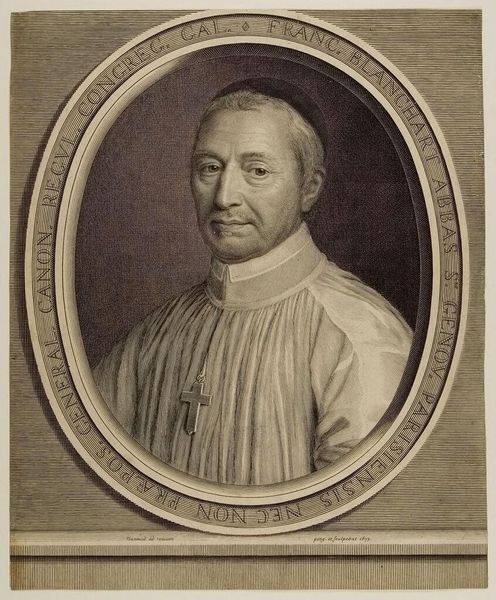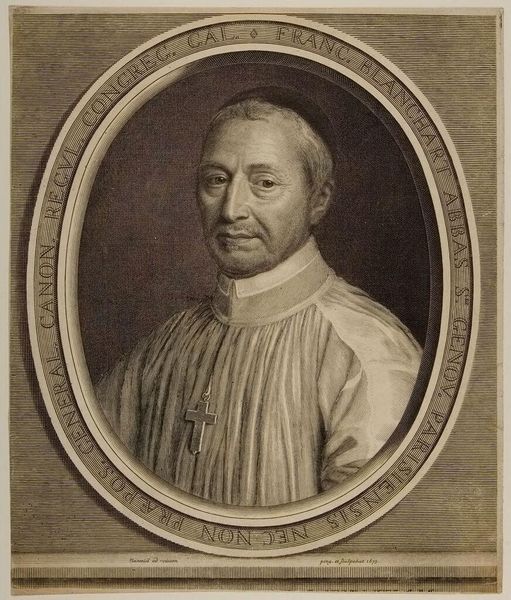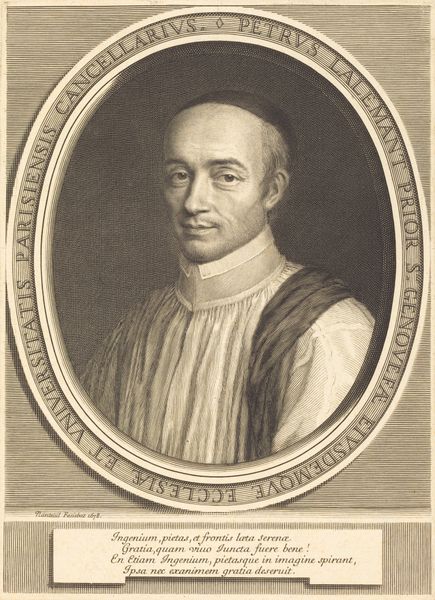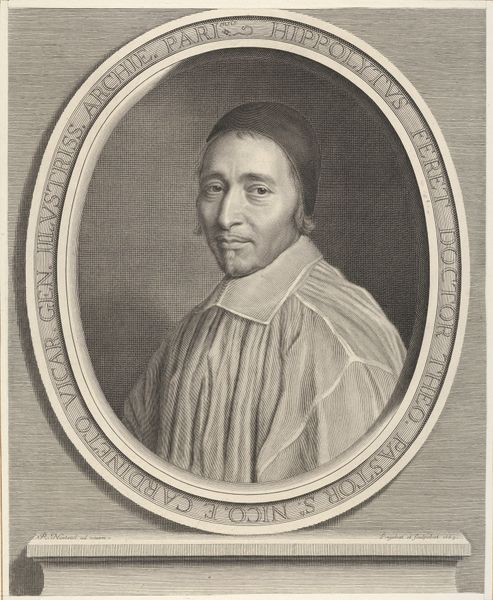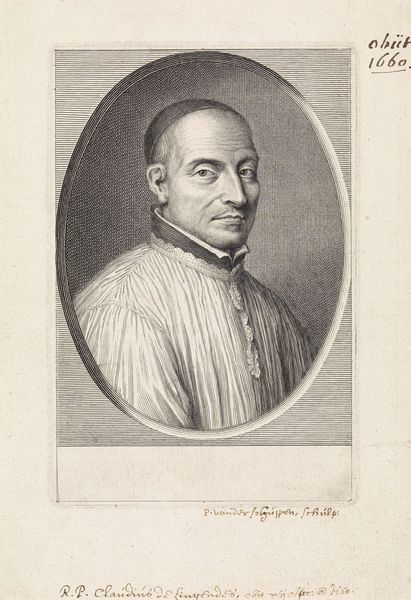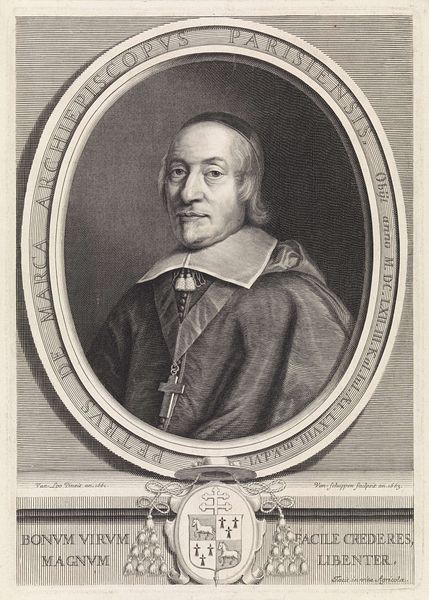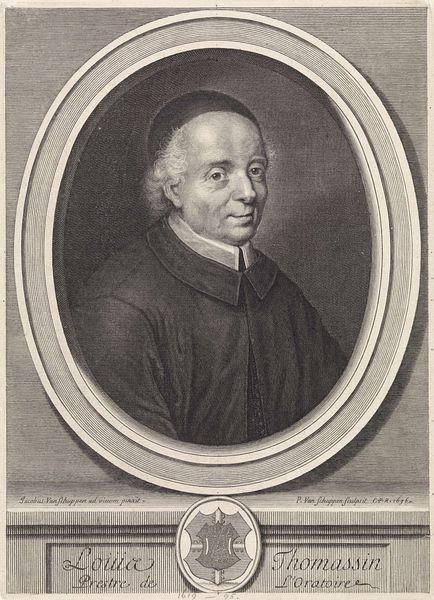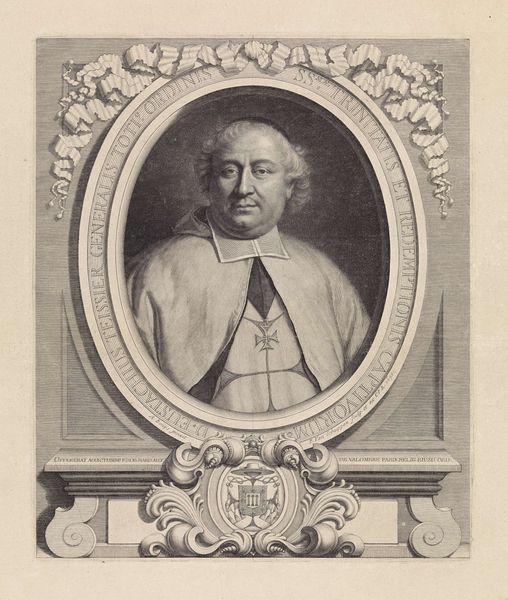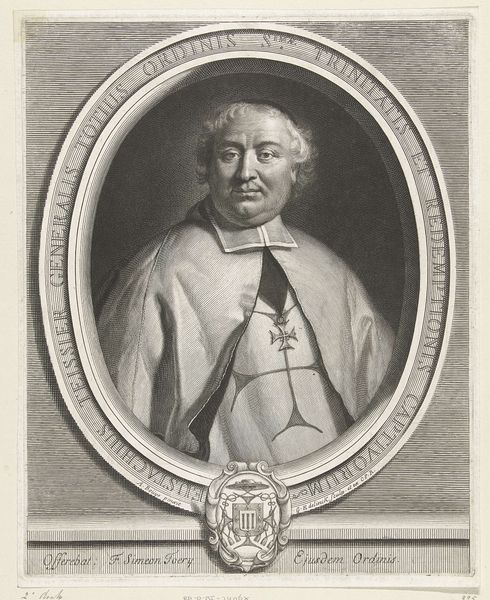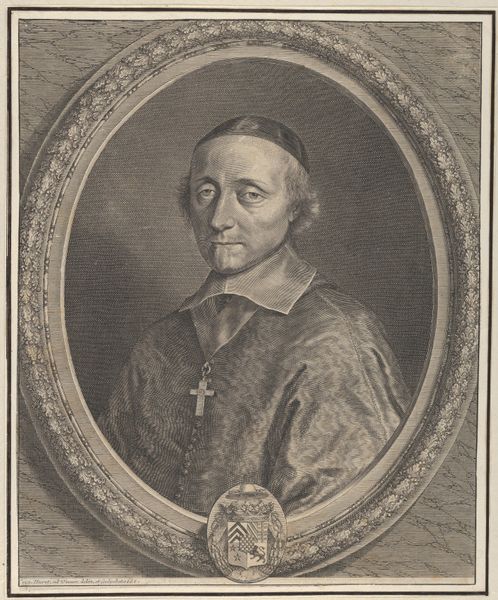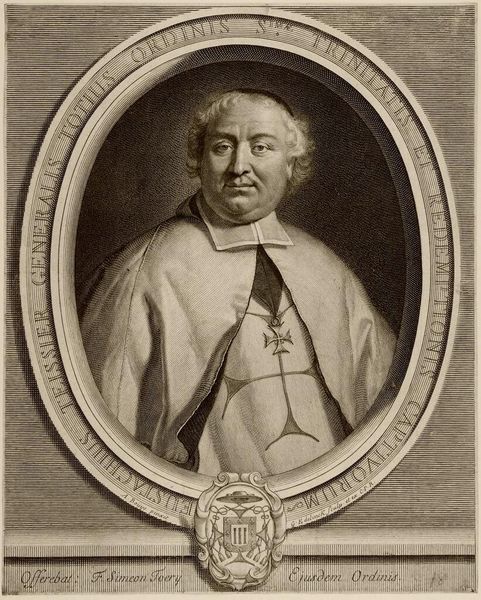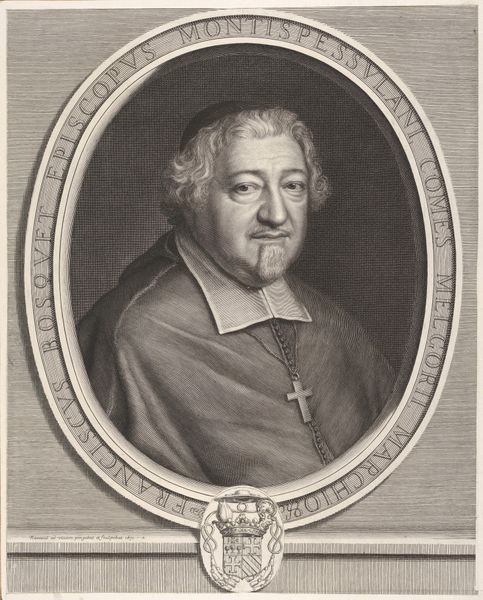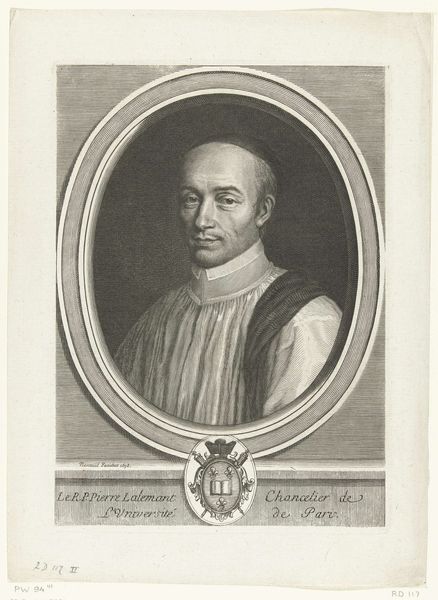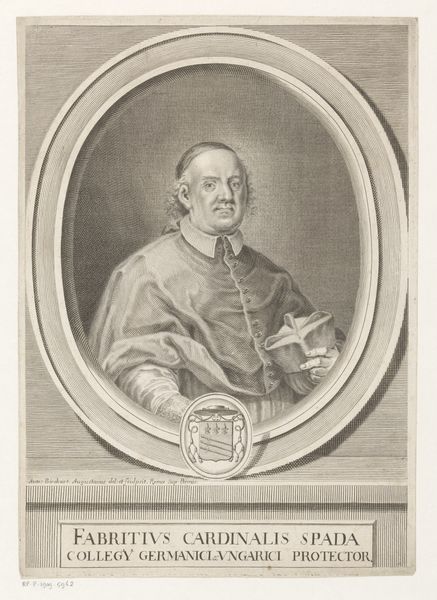
drawing, print, engraving
#
portrait
#
drawing
#
baroque
# print
#
history-painting
#
engraving
Dimensions: Sheet: 15 1/4 × 12 5/16 in. (38.7 × 31.3 cm)
Copyright: Public Domain
Curator: This is a portrait of François Blanchart, created in 1673 by Robert Nanteuil. It’s currently located at the Metropolitan Museum of Art. Editor: It strikes me as incredibly precise. You can almost feel the texture of his clerical garments, even in this two-dimensional engraving. There's a somber quality as well, a certain seriousness etched into his face. Curator: Nanteuil was known for his exceptional skill in engraving. Think about the cultural context: printmaking was crucial for disseminating images and ideas during this era, and portraits like these held immense social value. Blanchart, with his clerical roles, certainly wanted his image and influence known. Editor: Absolutely. The way Nanteuil utilizes the technique really captures the material quality of the image. The tiny, precise lines work to communicate status, piety and wealth. How do you read the relationship between his identity as a churchman, his clothing and the artistry involved? Curator: Well, his garb isn’t simply fabric; it symbolizes his position and power within the Church. Engraving, in this context, isn’t just a craft, but a tool for reinforcing societal hierarchies. Blanchart’s choice to commission a portrait signals a conscious decision to engage with and perpetuate those structures. Editor: It's almost like he is carefully staging the display of his material standing and institutional position. We know there was growing concern about how to balance the display of affluence with calls for humility and restraint among members of the church. Do you see those debates reflected here at all? Curator: The choice of portrait, a permanent mark, represents an adherence to more entrenched forms of expressing power and authority. It’s worth interrogating that and connecting it with larger historical power dynamics during the Baroque period. Editor: So, while on the surface, it's simply a portrait, it holds layers of complex information about identity, role, skill and influence. I am intrigued. Curator: Agreed. Exploring art through interdisciplinary frameworks allows us to see the multiple social functions an artwork can play. It encourages critical reflection.
Comments
No comments
Be the first to comment and join the conversation on the ultimate creative platform.
